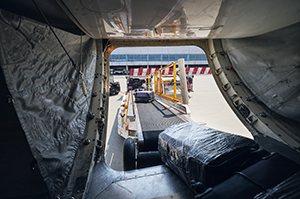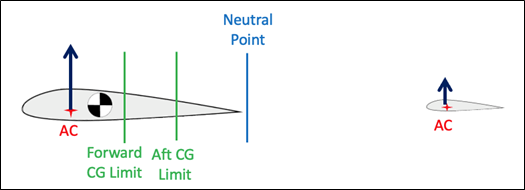
Longitudinal static stability relates to the lift moment effects of the wing and the tailplane and how they interact. To examine this, we imagine that the aeroplane is a balance beam or see-saw, with the CG being the pivot point, as shown in the below diagram.

As can be seen the moment force of the wing is larger than that of the tail with the CG in its current position. This means if the aeroplane suffers a gust, then the angles of attack of both the wing and tail are increased increasing their forces. But because the wing has the largest force the aeroplane will pitch further up increasing the forces moving the aeroplane further away from its starting point. This would be unstable.

If we move the CG further forward the unstable wing moment will reduce and the stable tail moment will increase. Eventually we will achieve a point where the two moments are equal and this is the Neutral point.

If we continue to move the CG forward, then the aeroplane will become stable which is what we require. However, we could reach the stage where the CG is too far forward, and the aeroplane would be too stable. This would mean the aeroplane would be uncontrollable and we therefore require limits for the CG to remain within.

The limits are the forward CG limit to ensure sufficient controllability and the aft CG limit to ensure sufficient stability.

